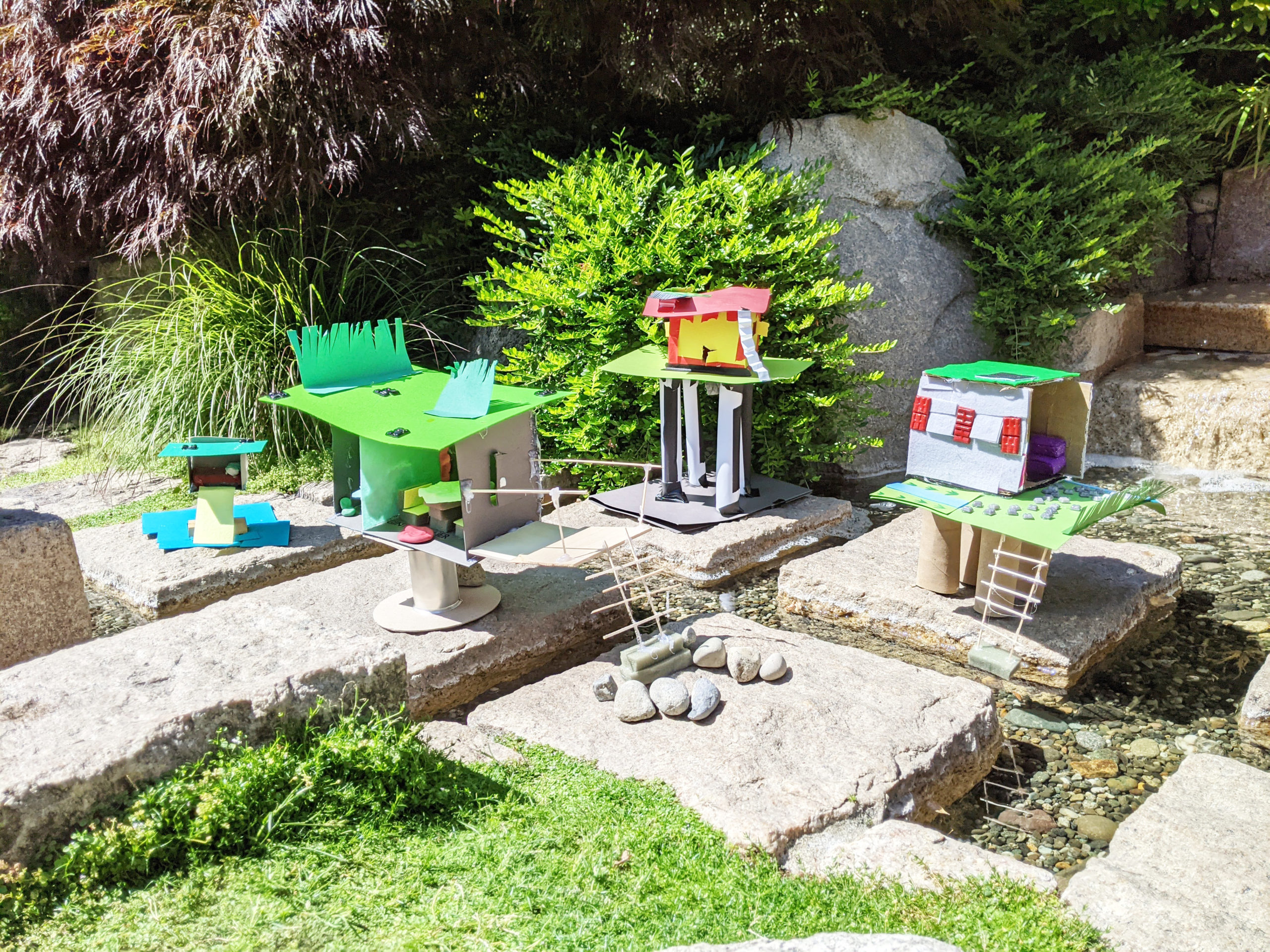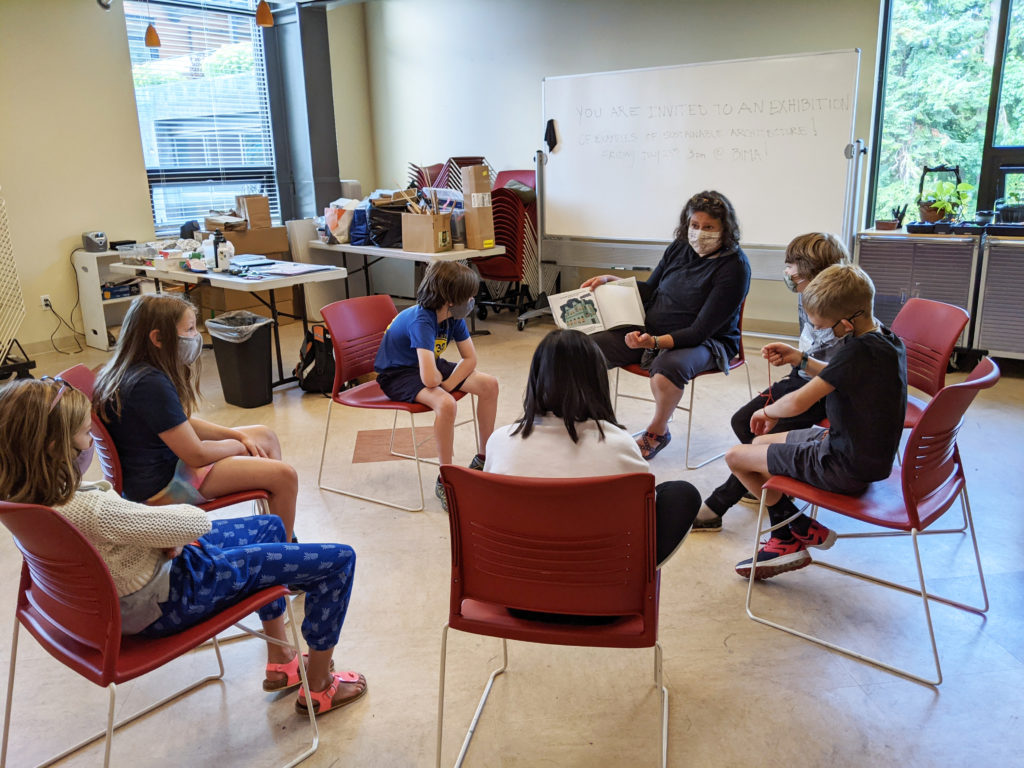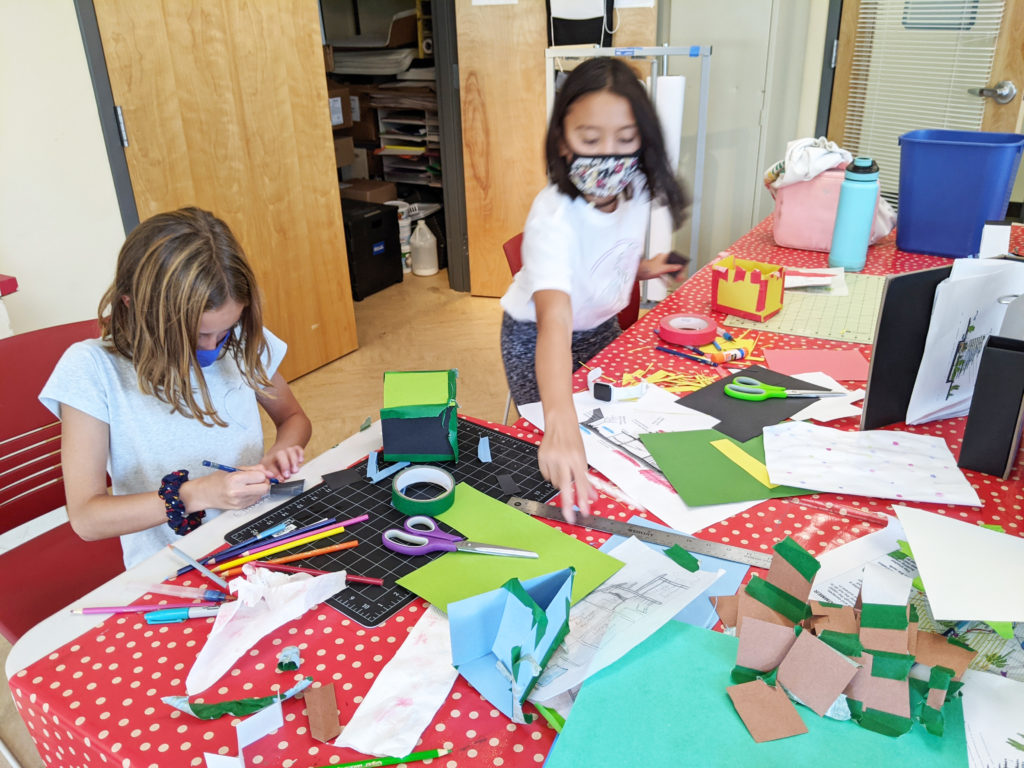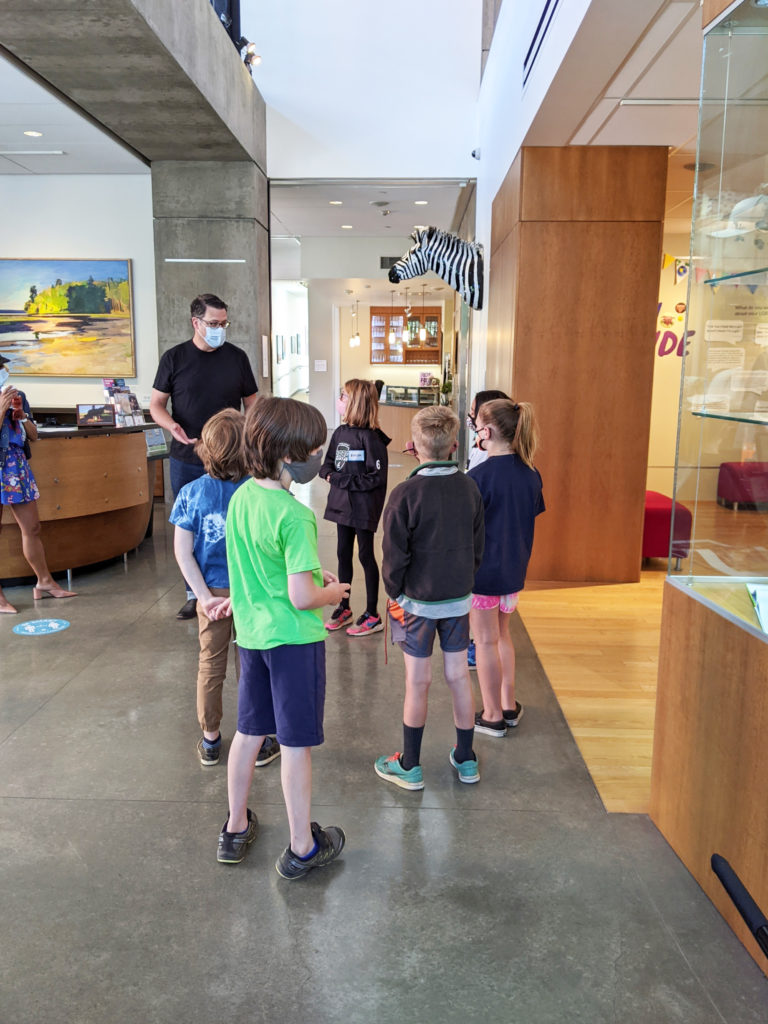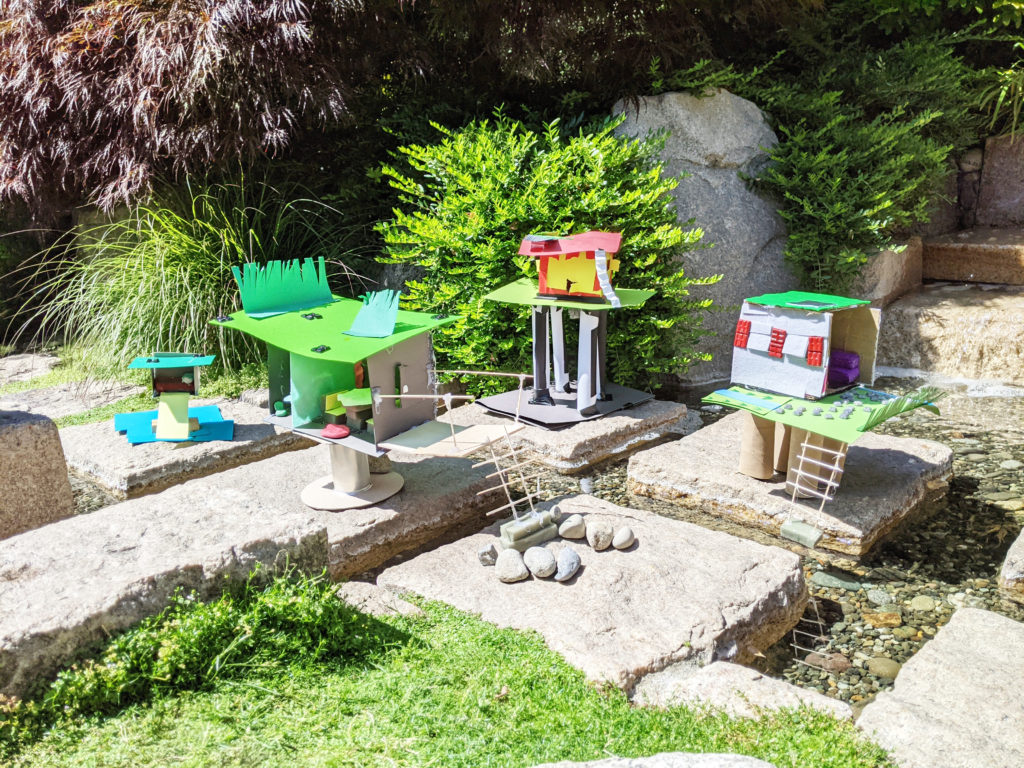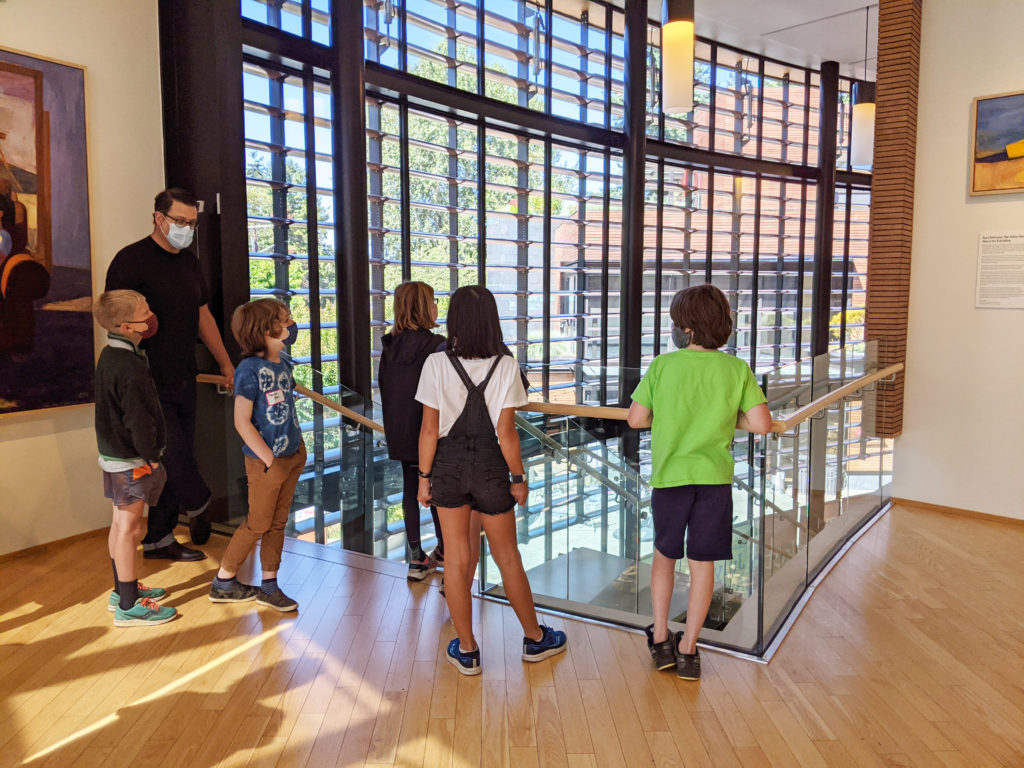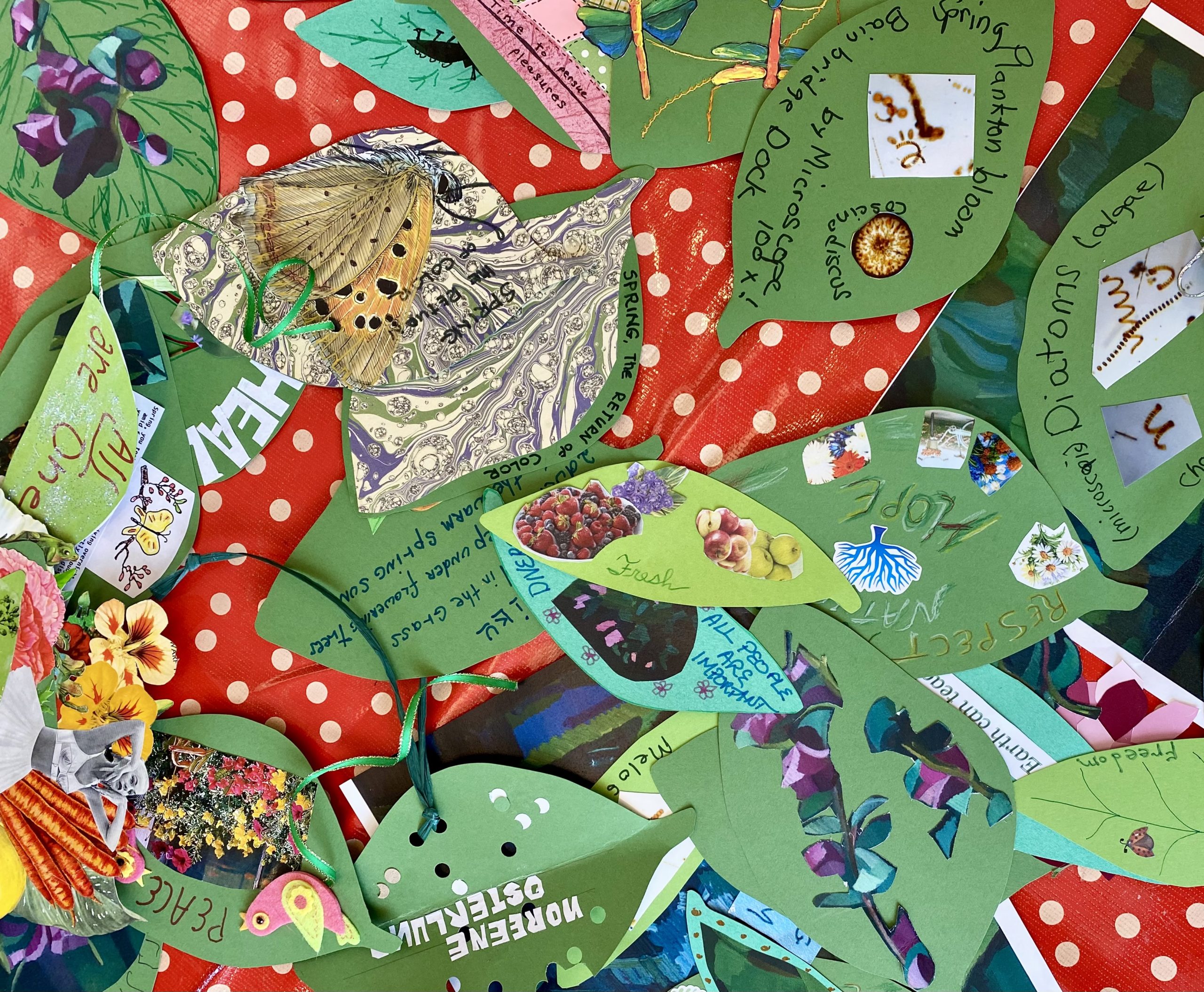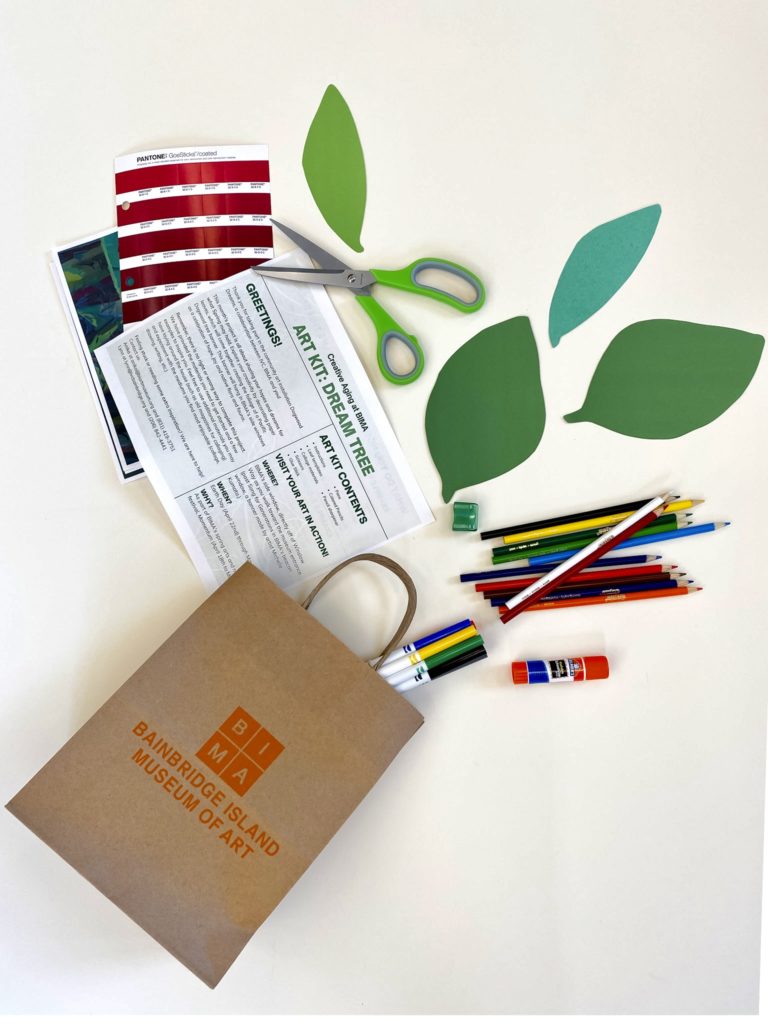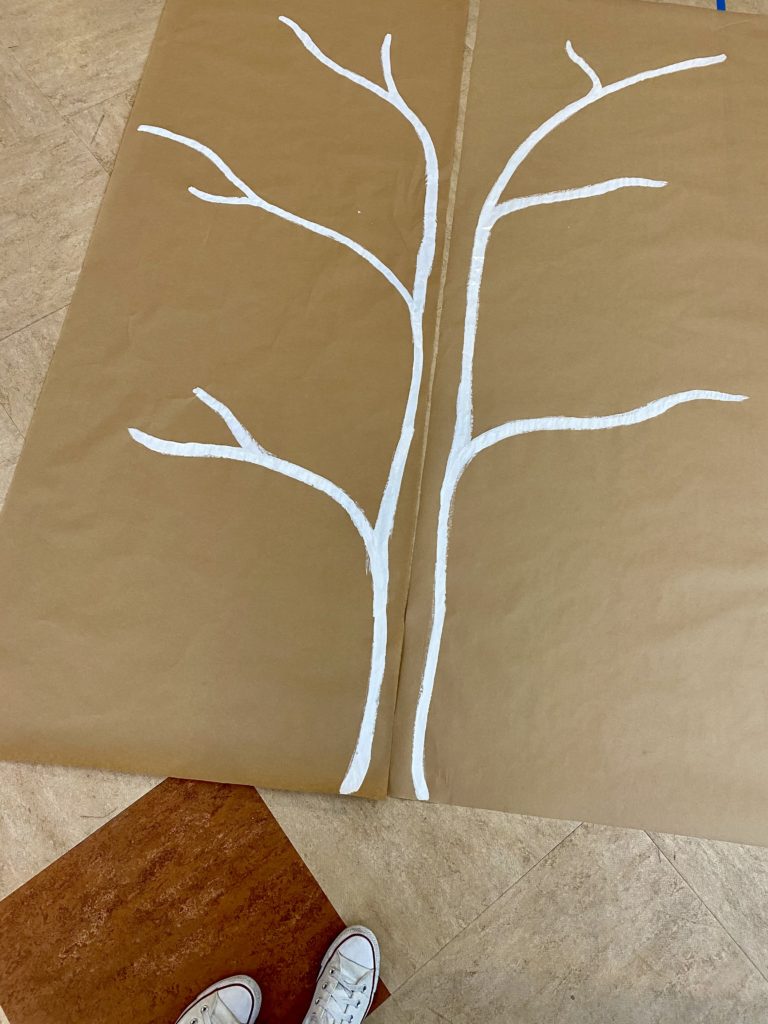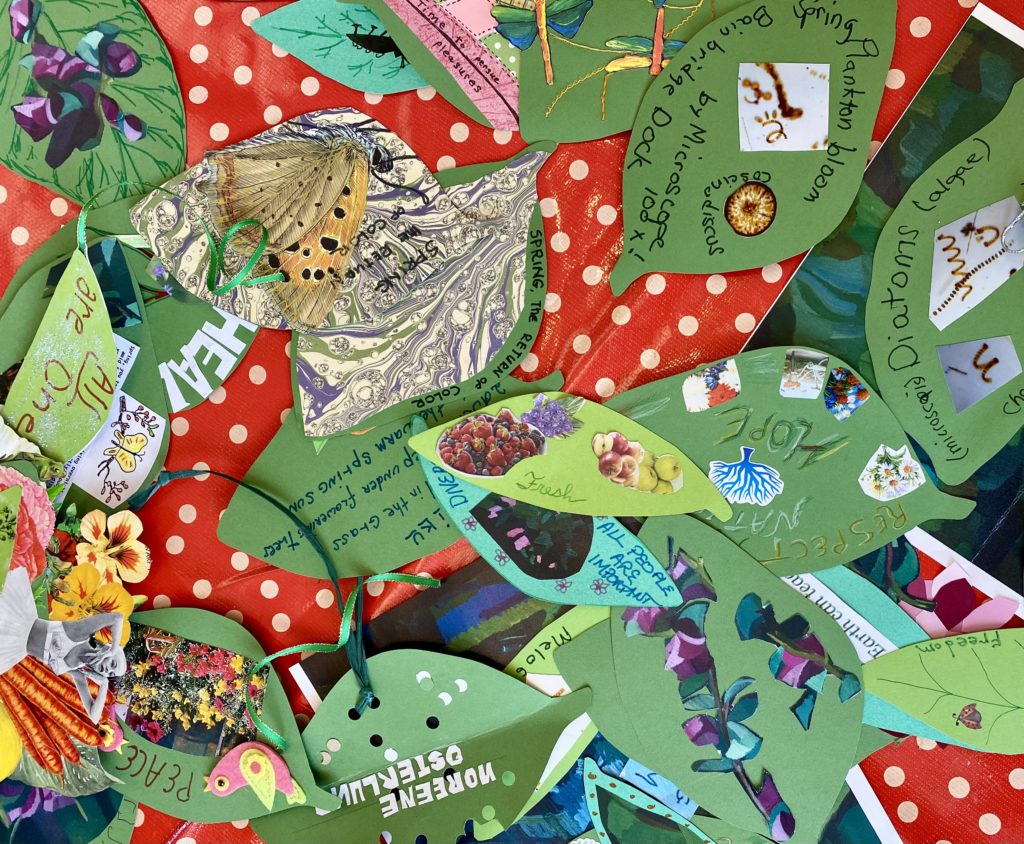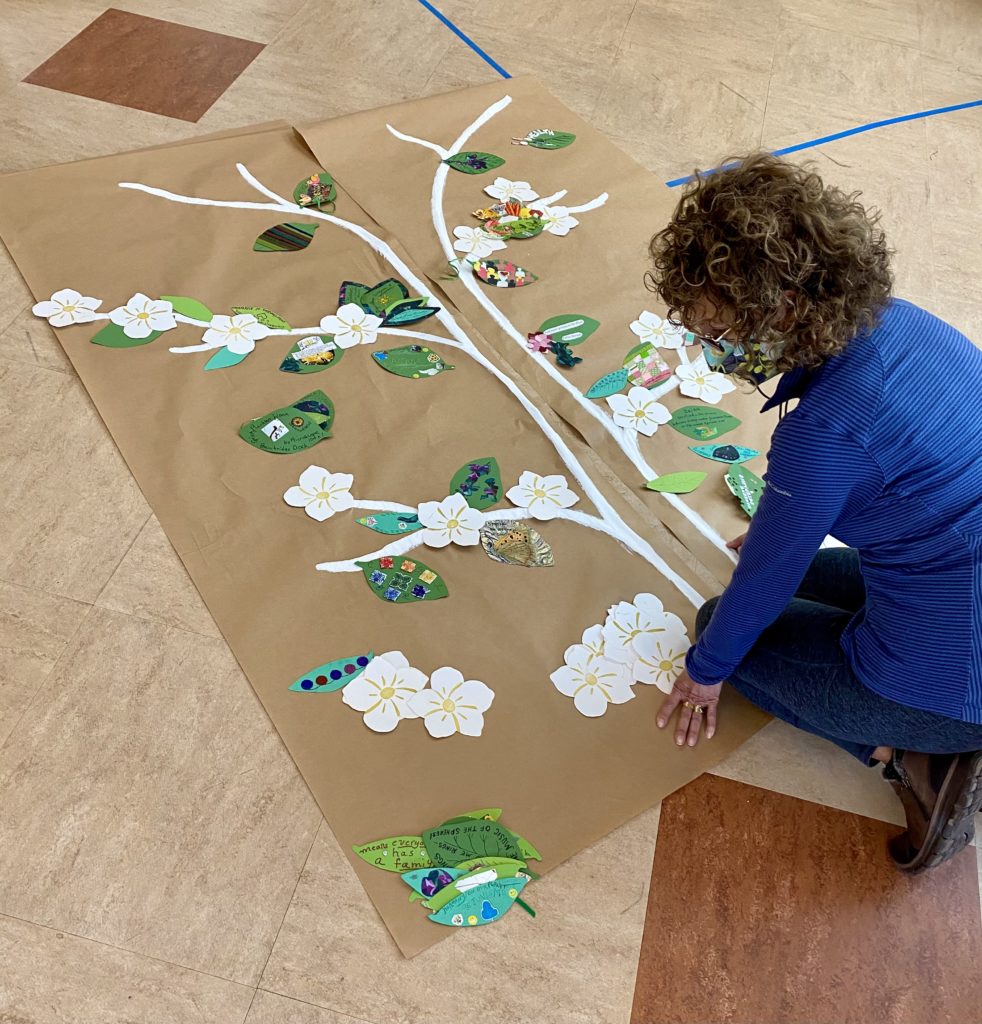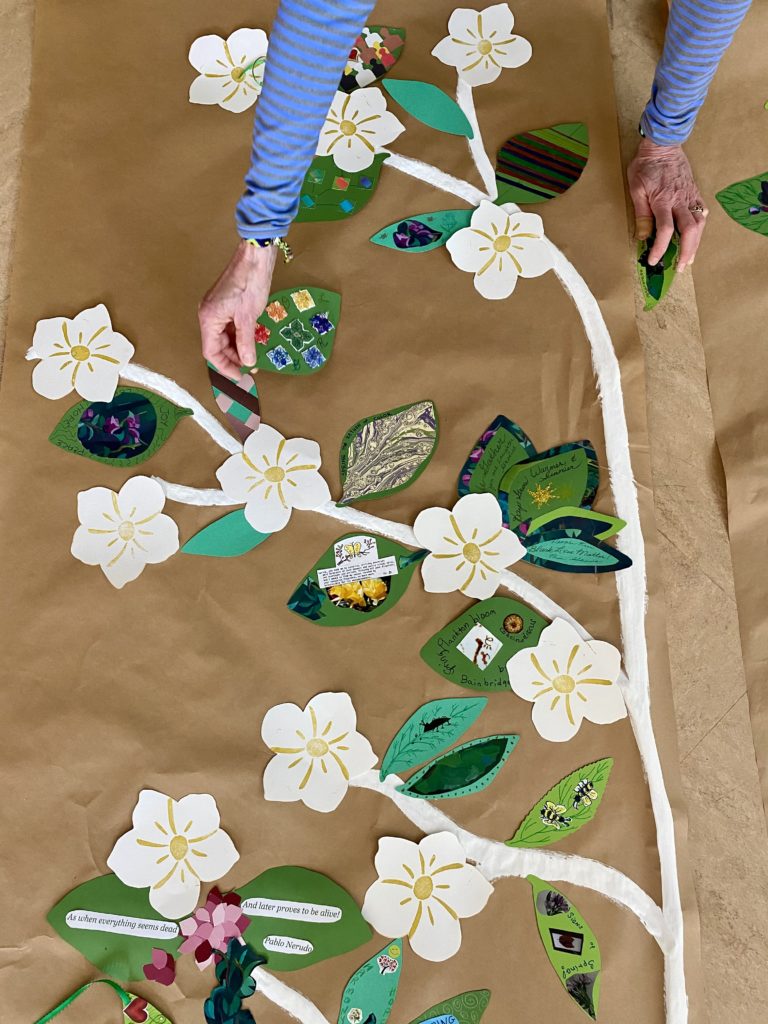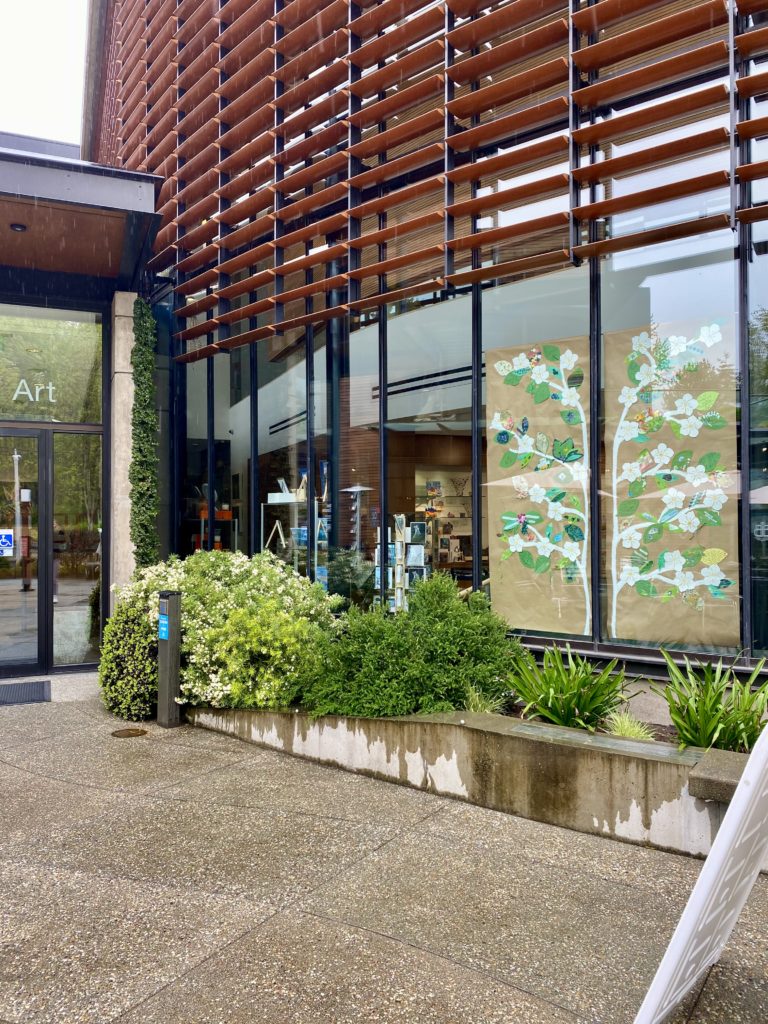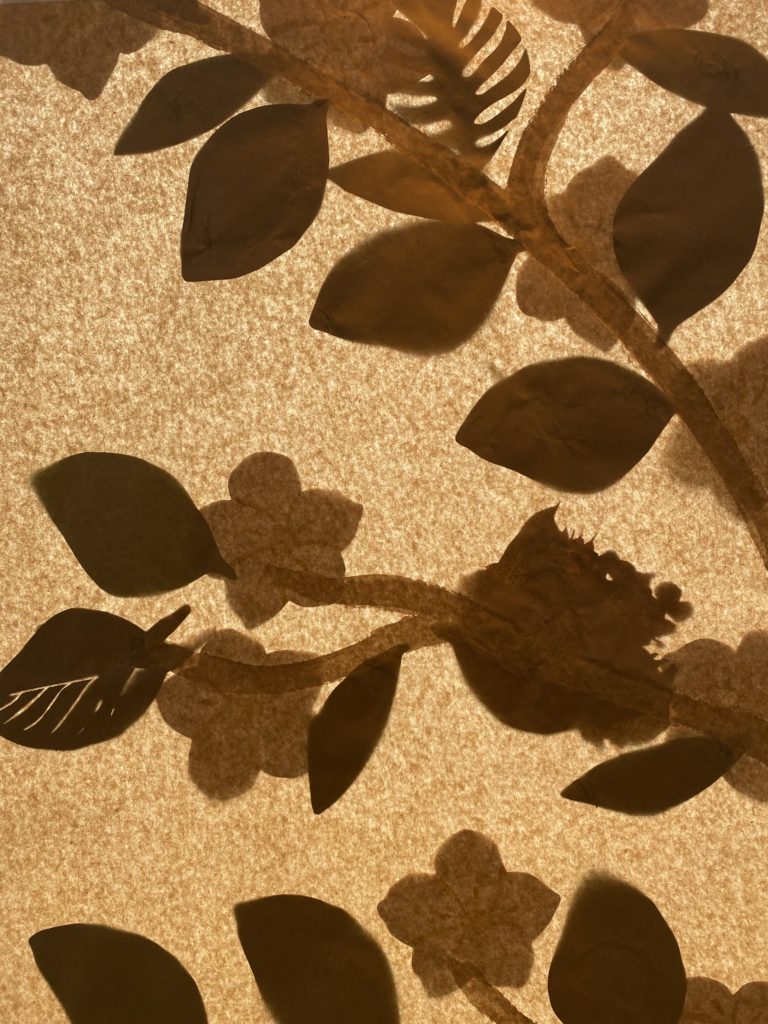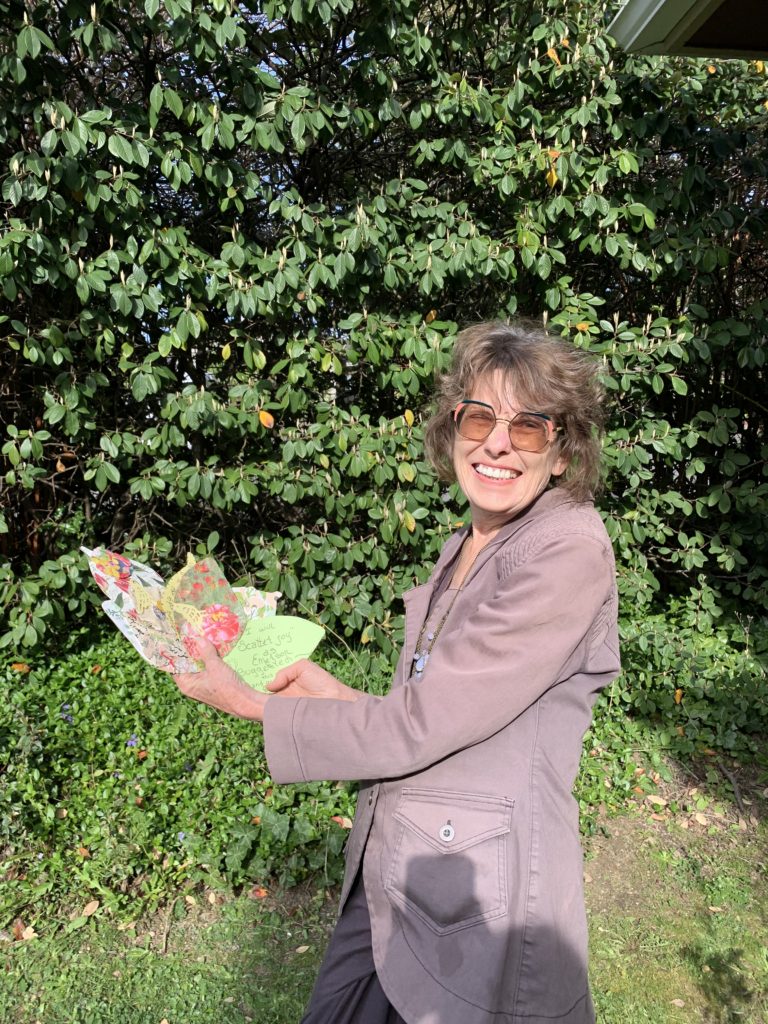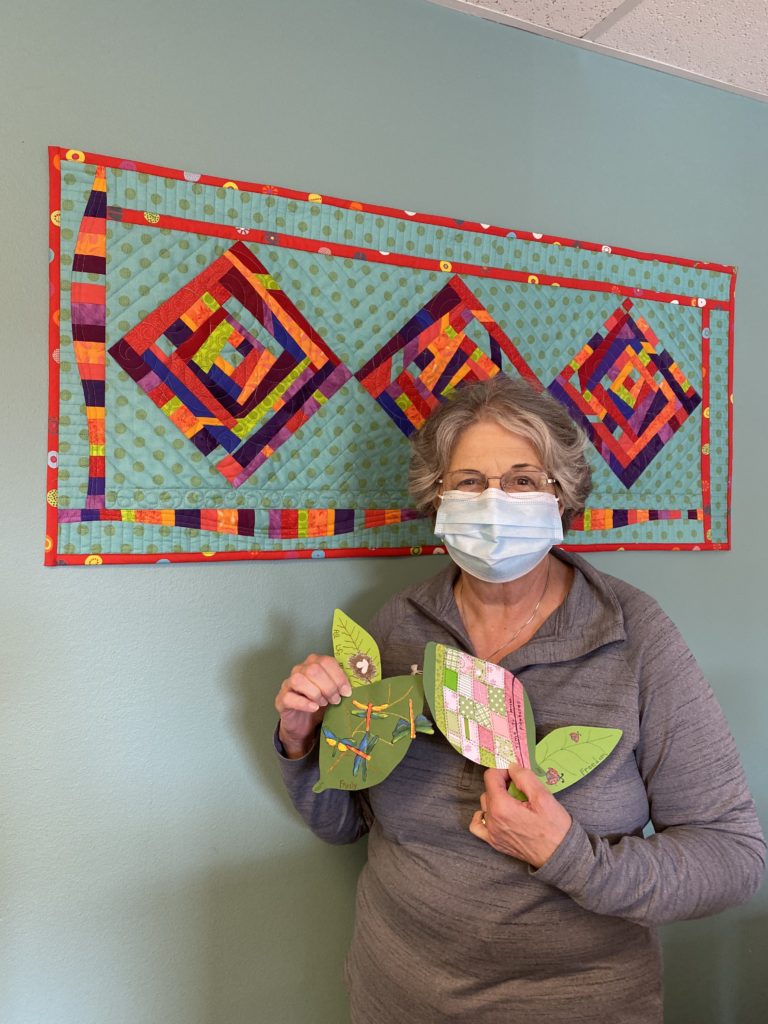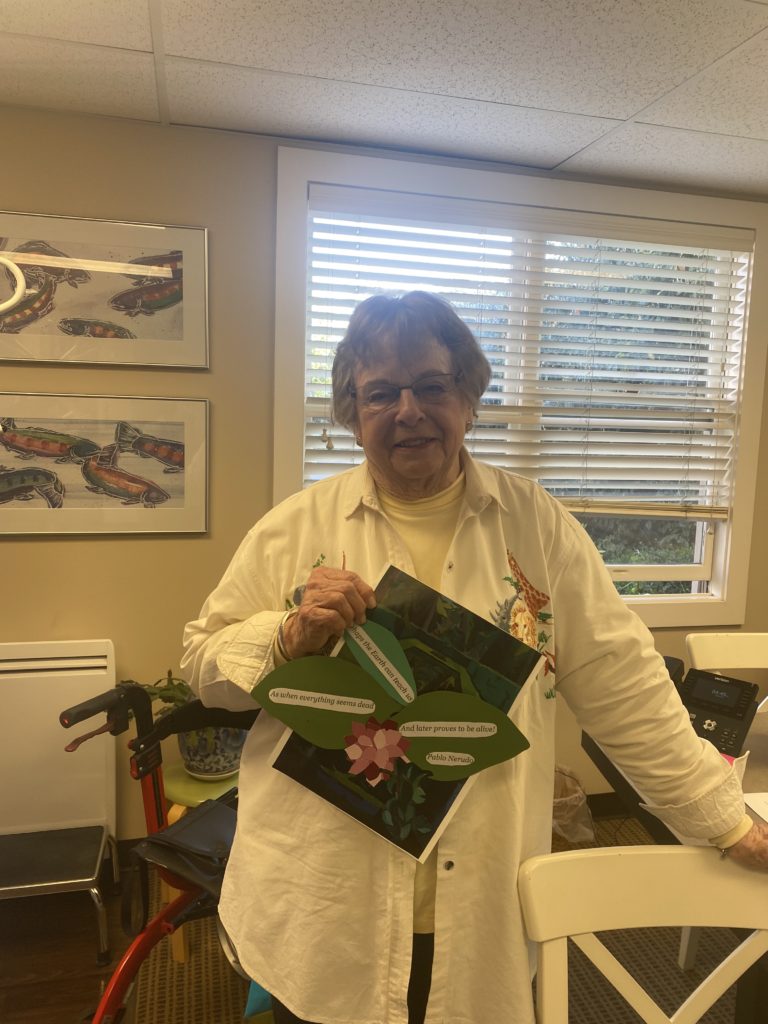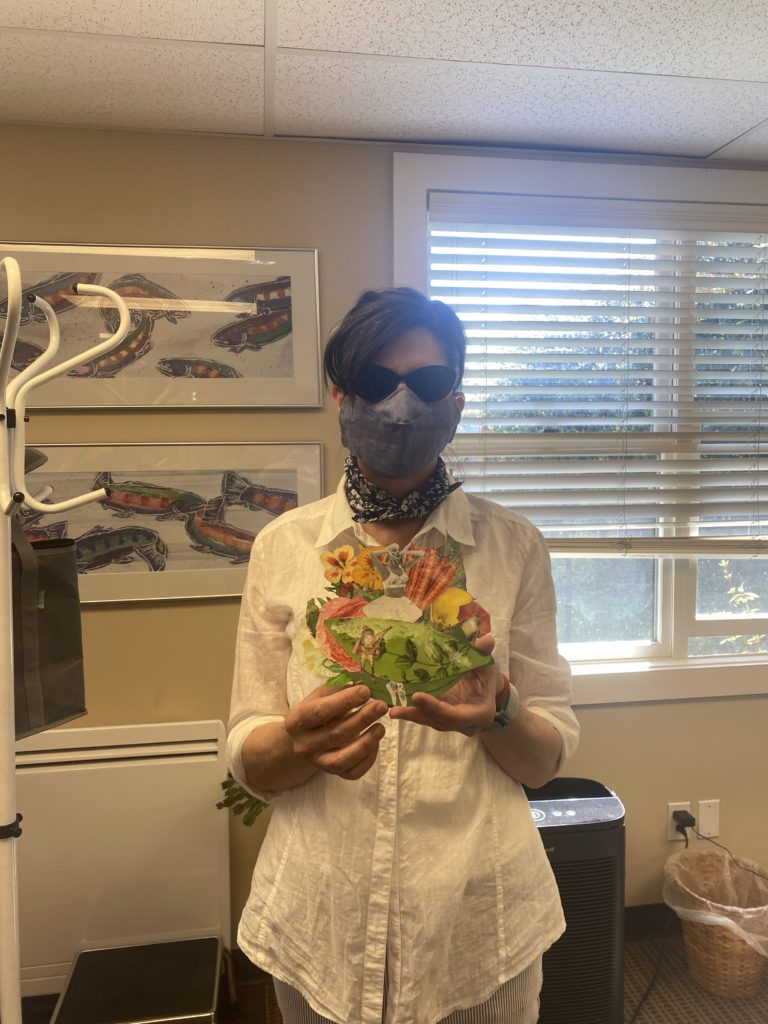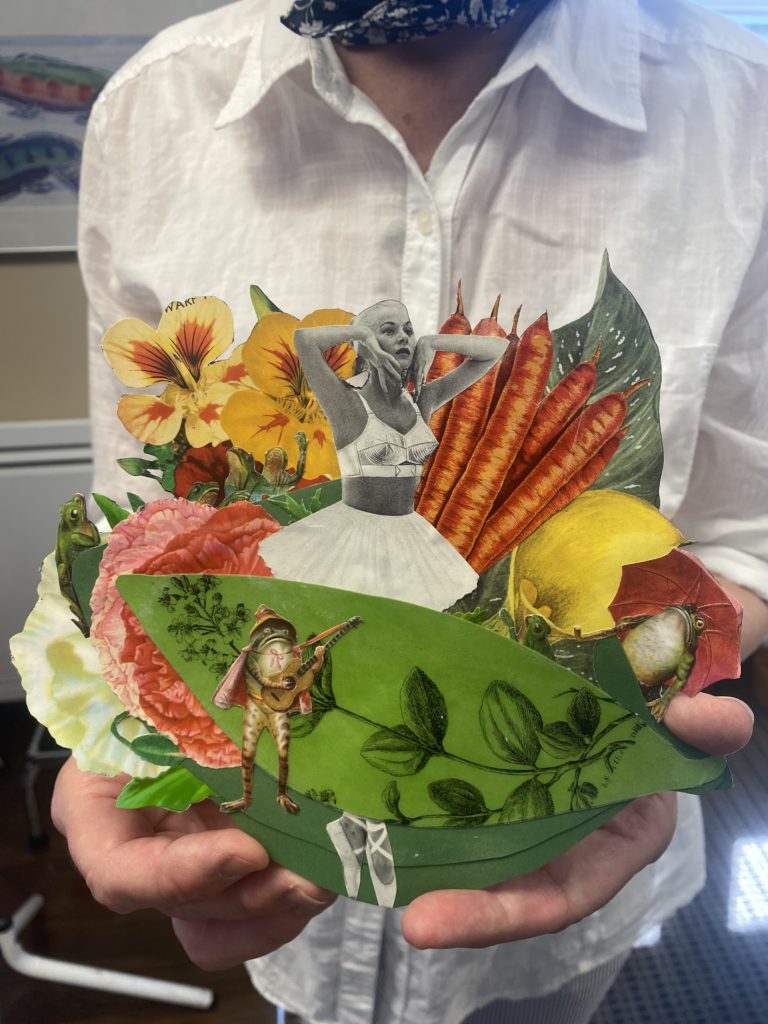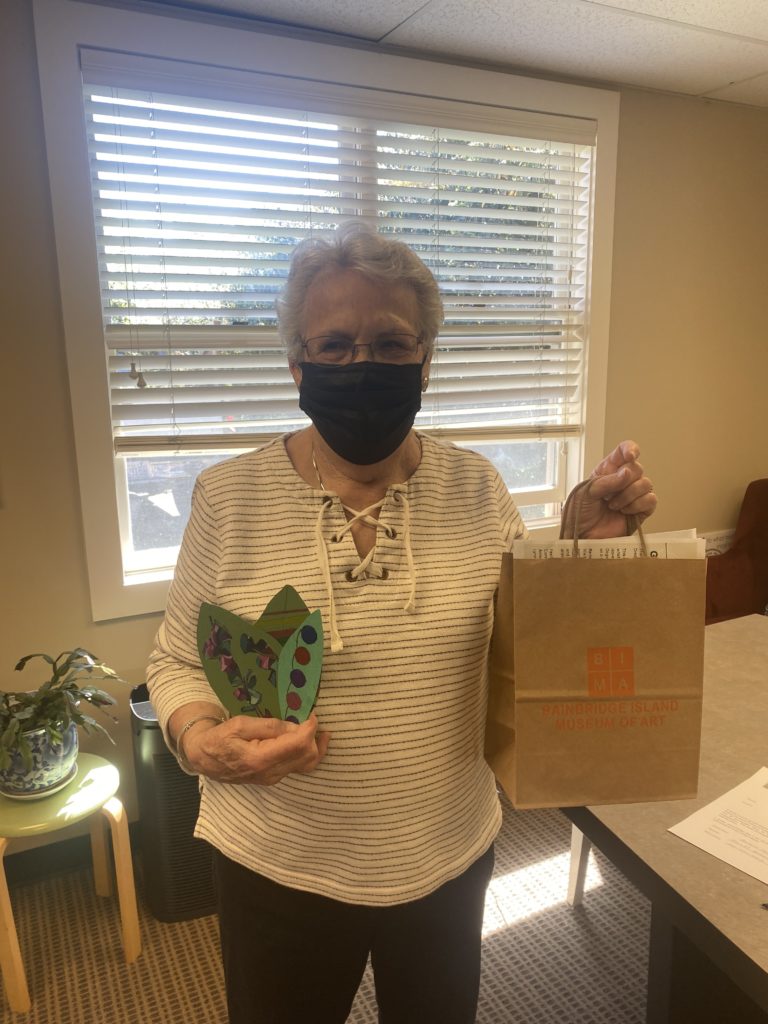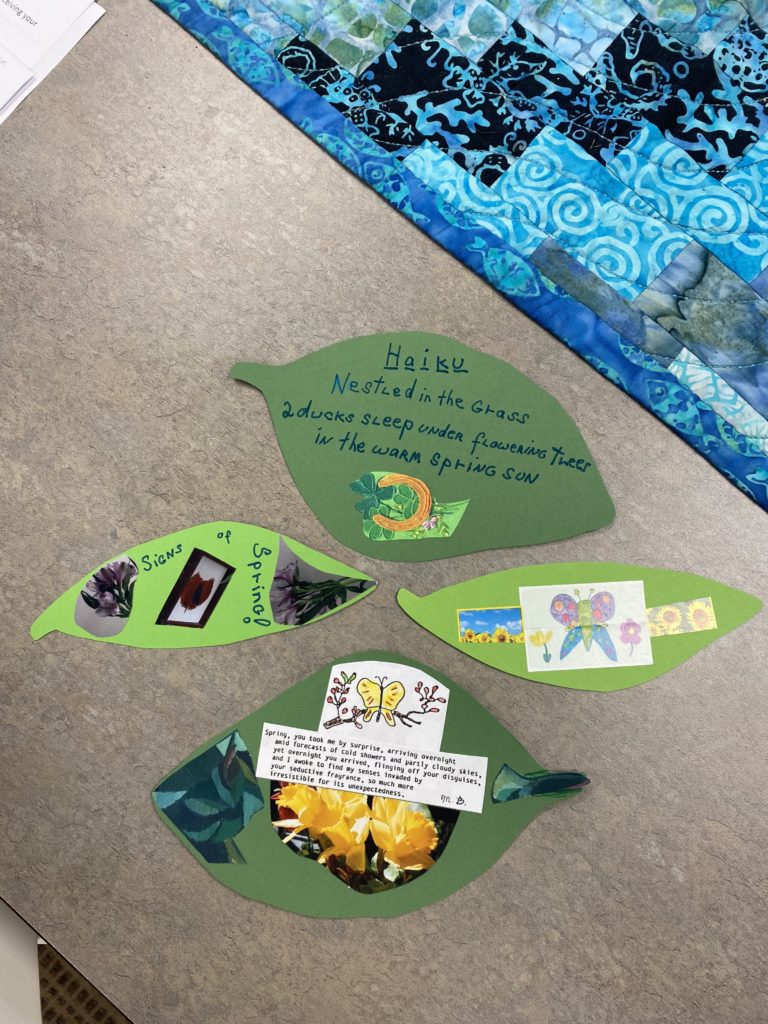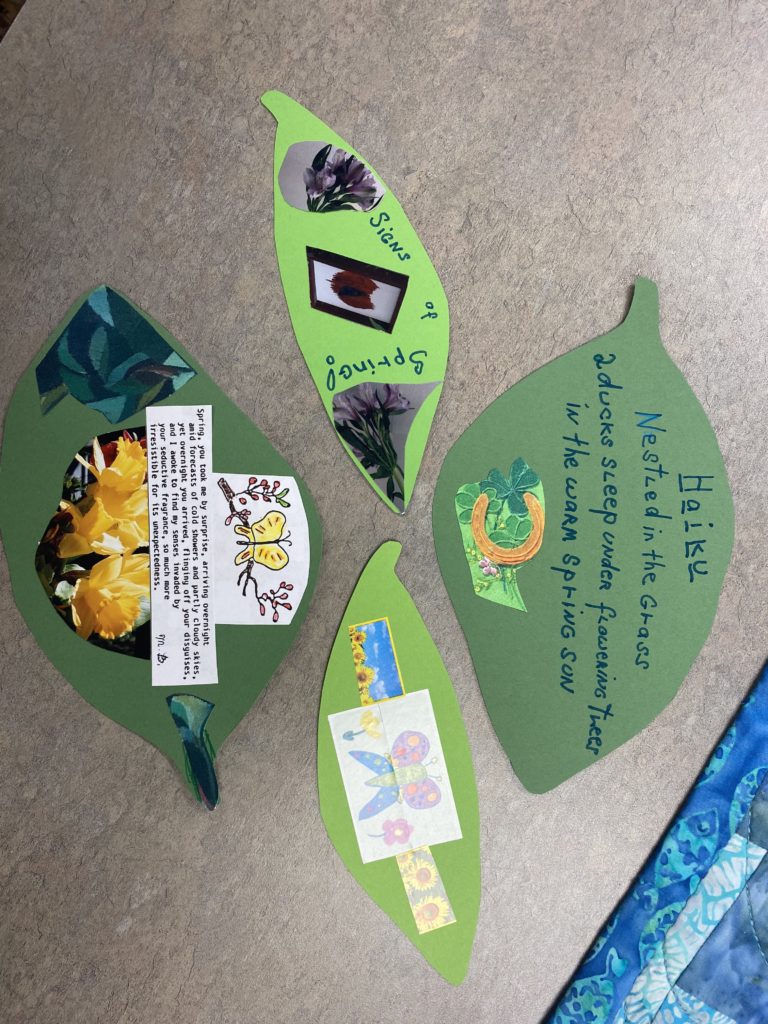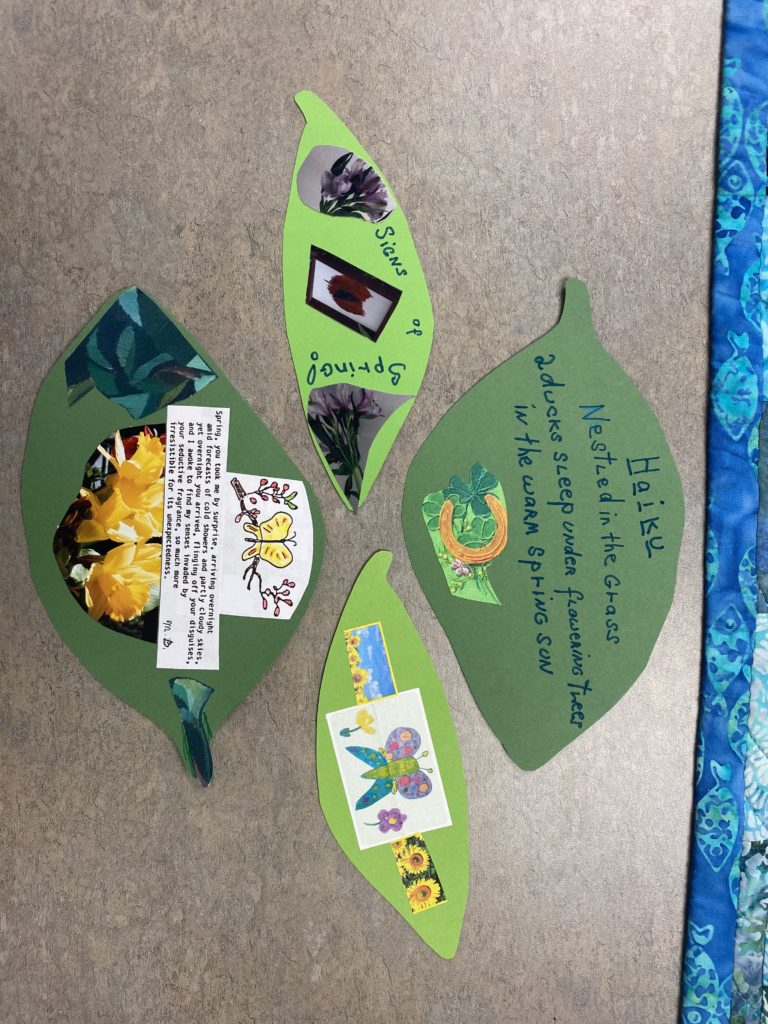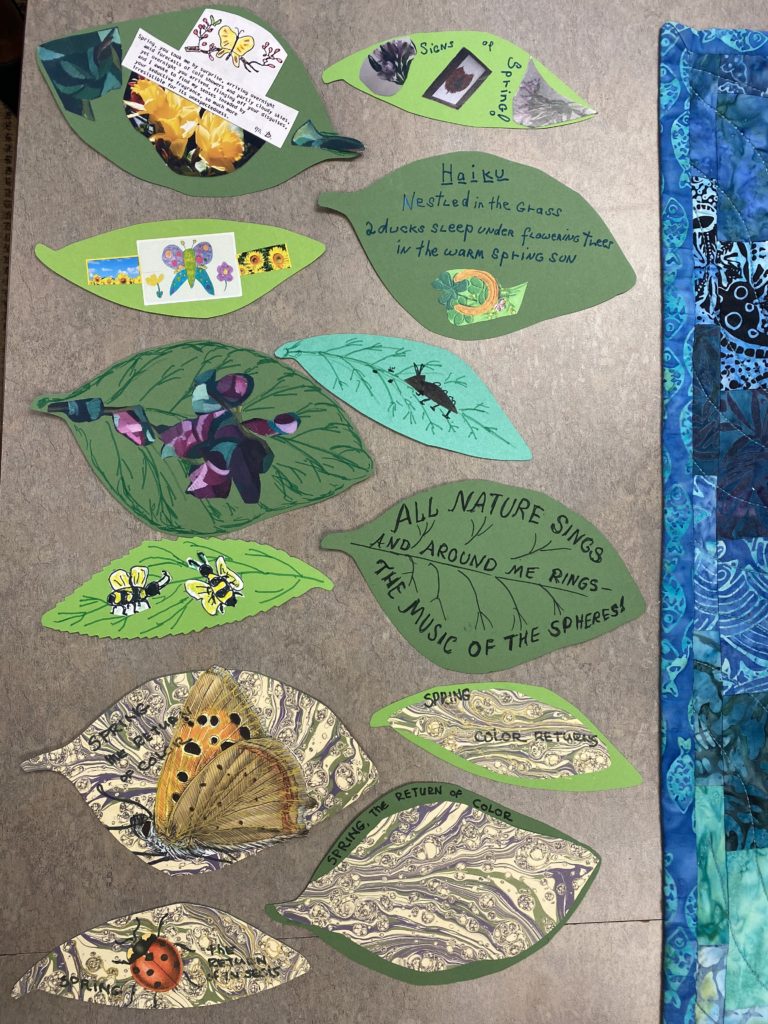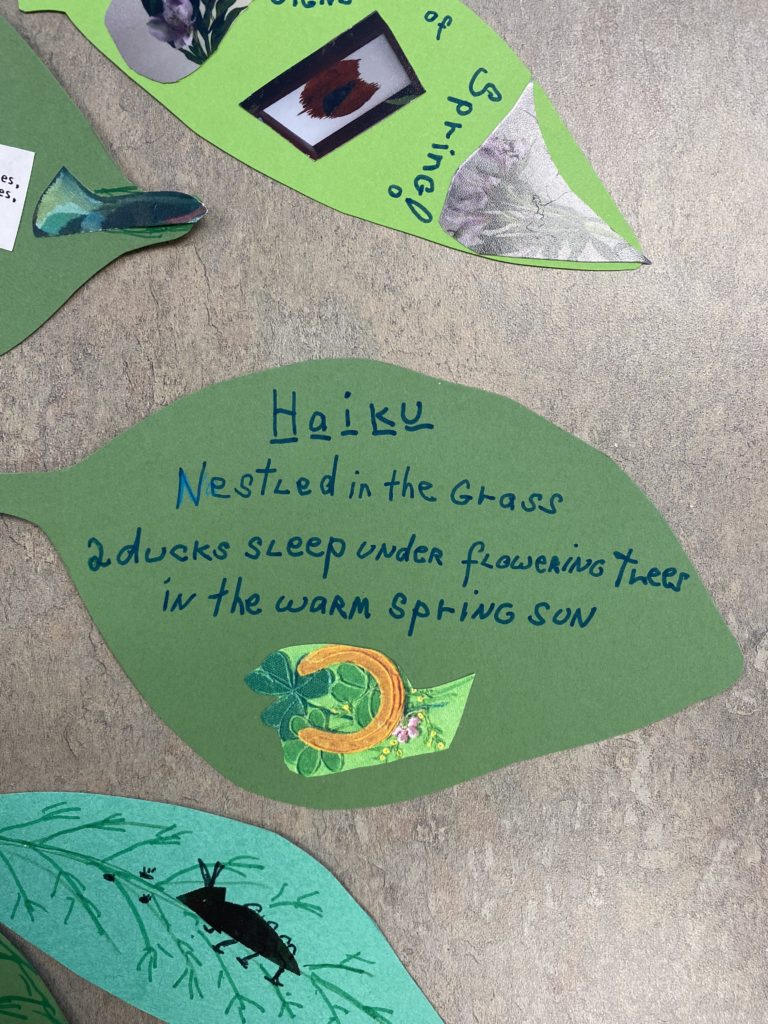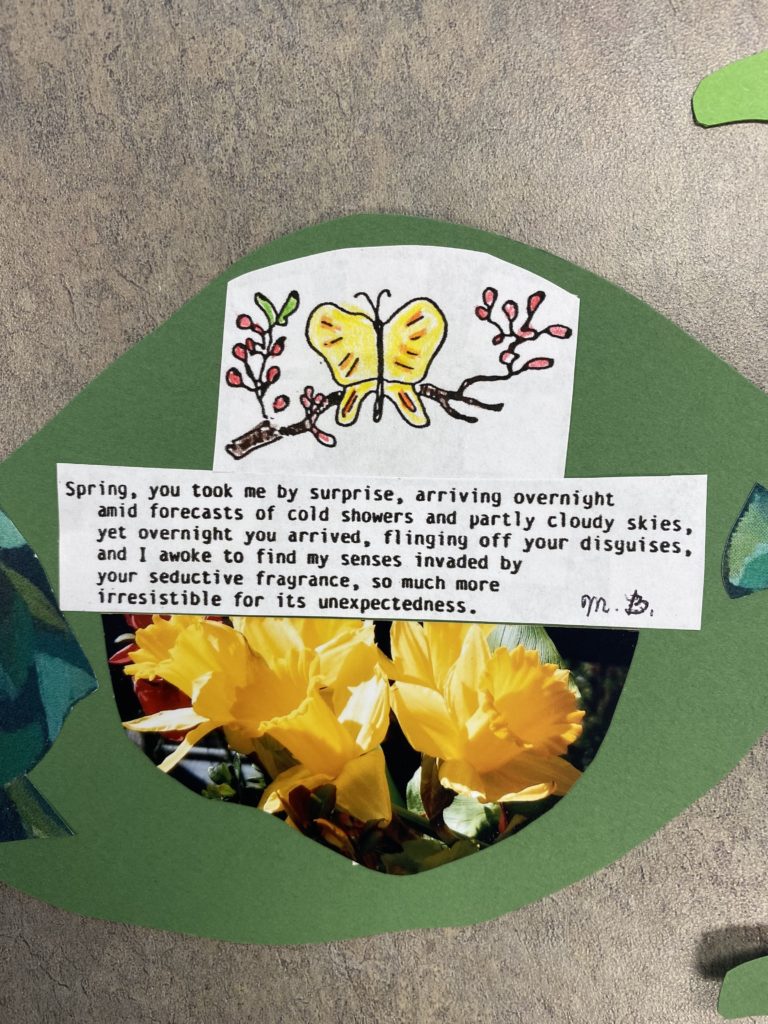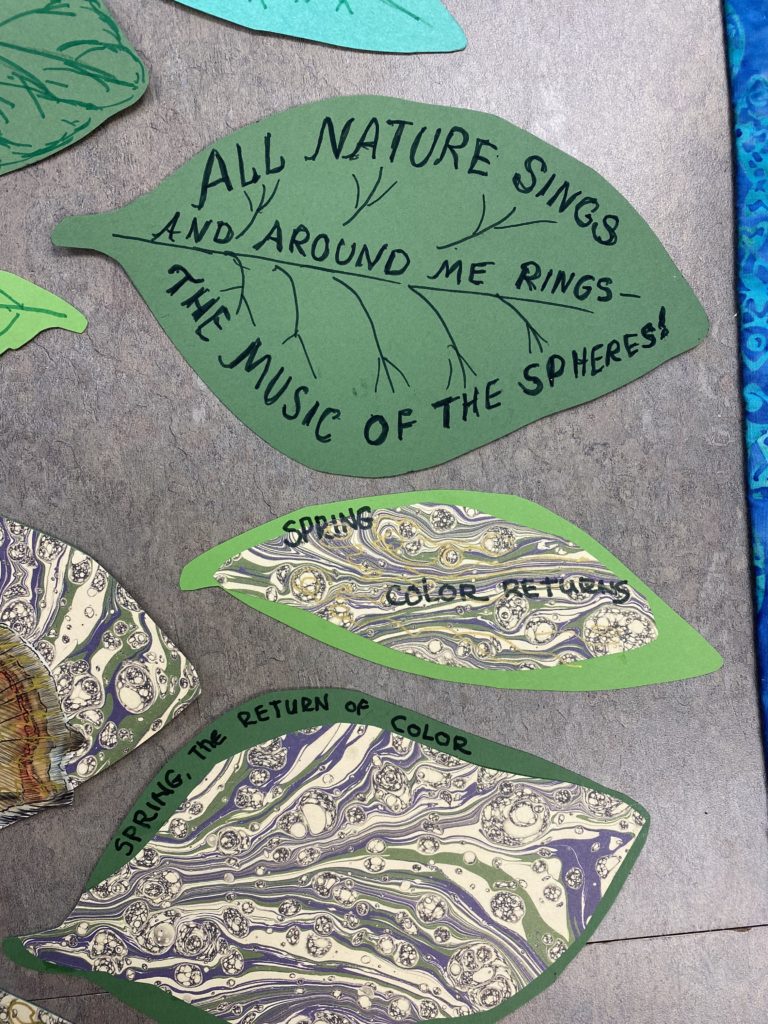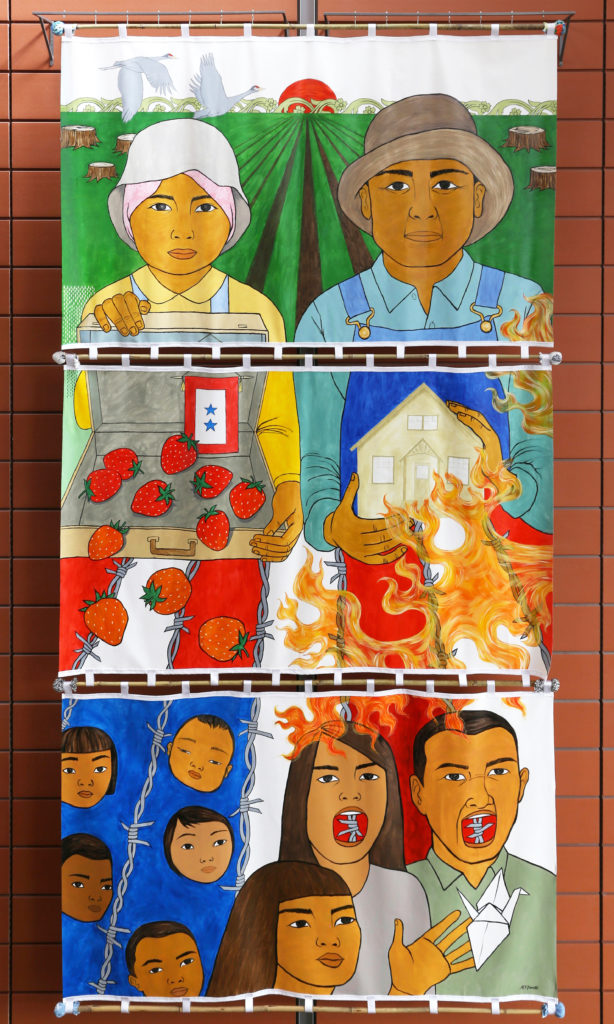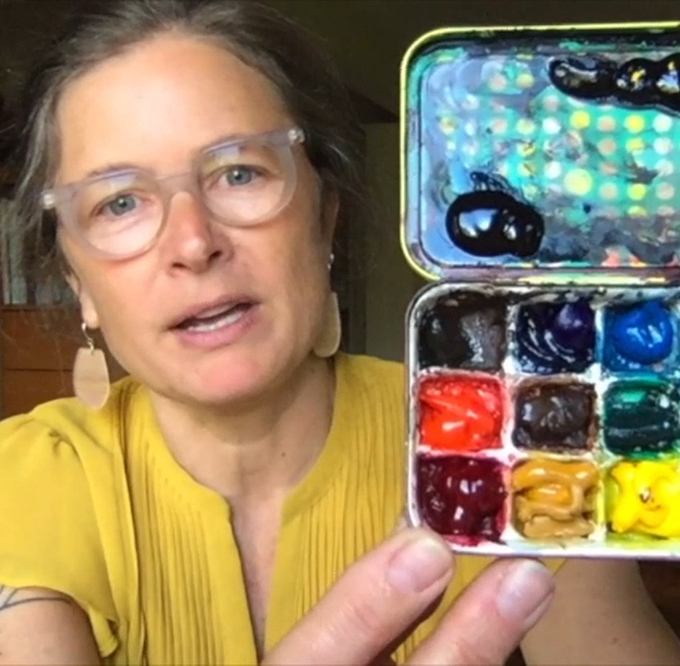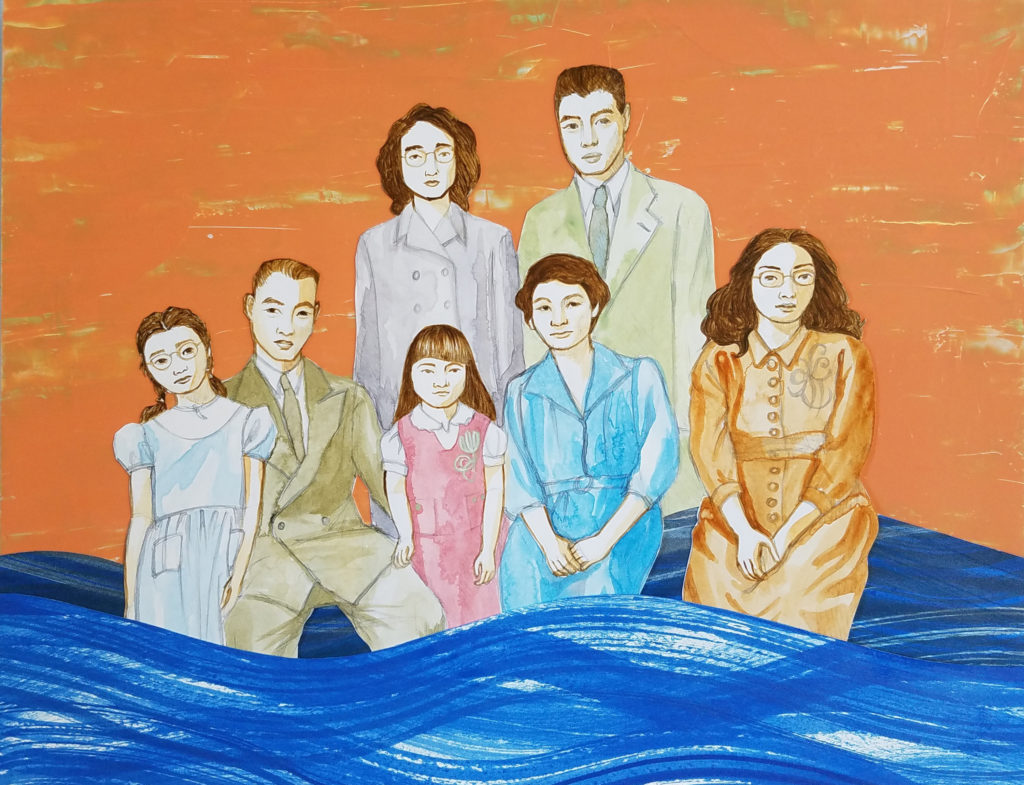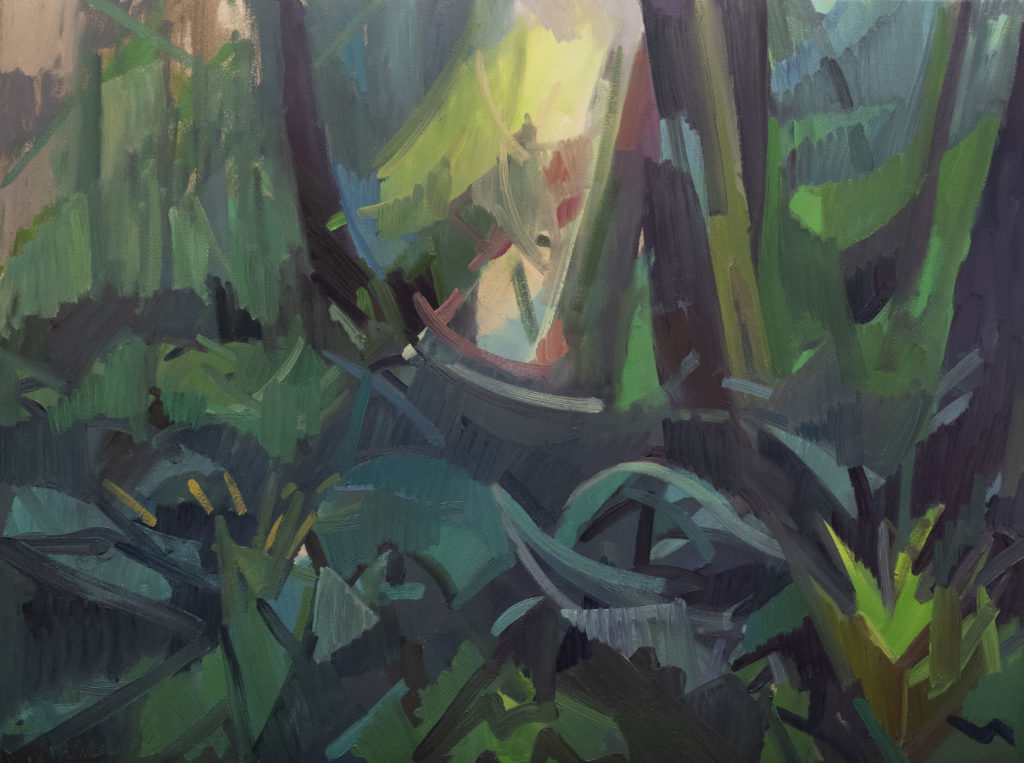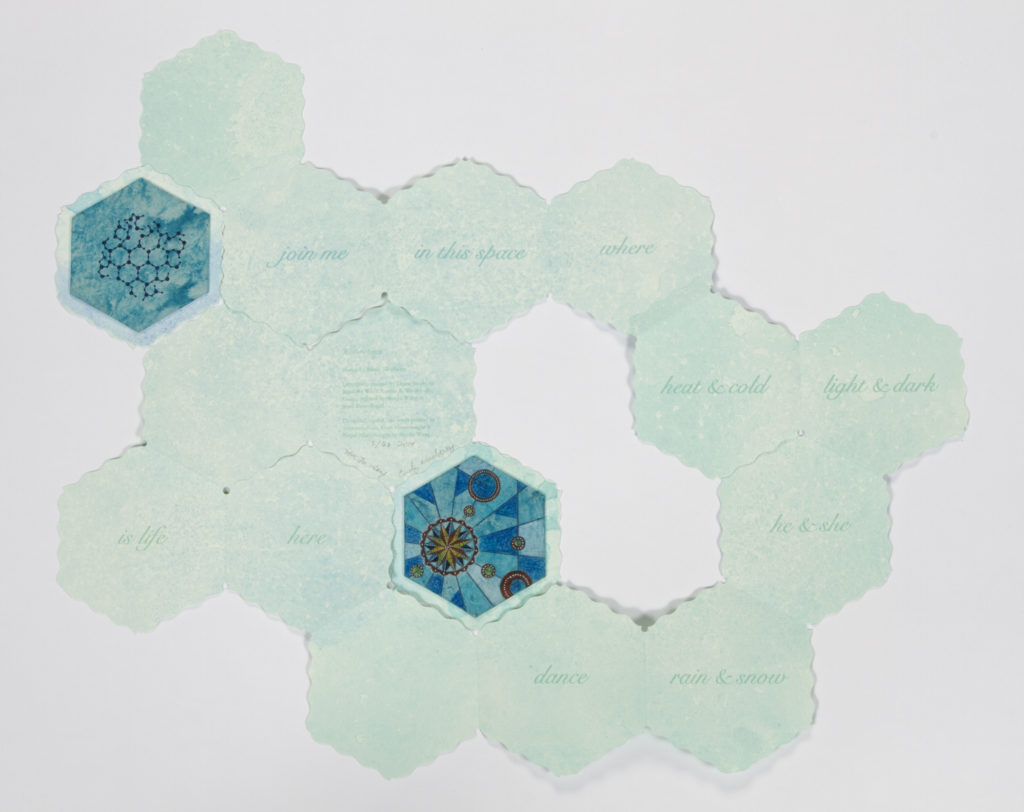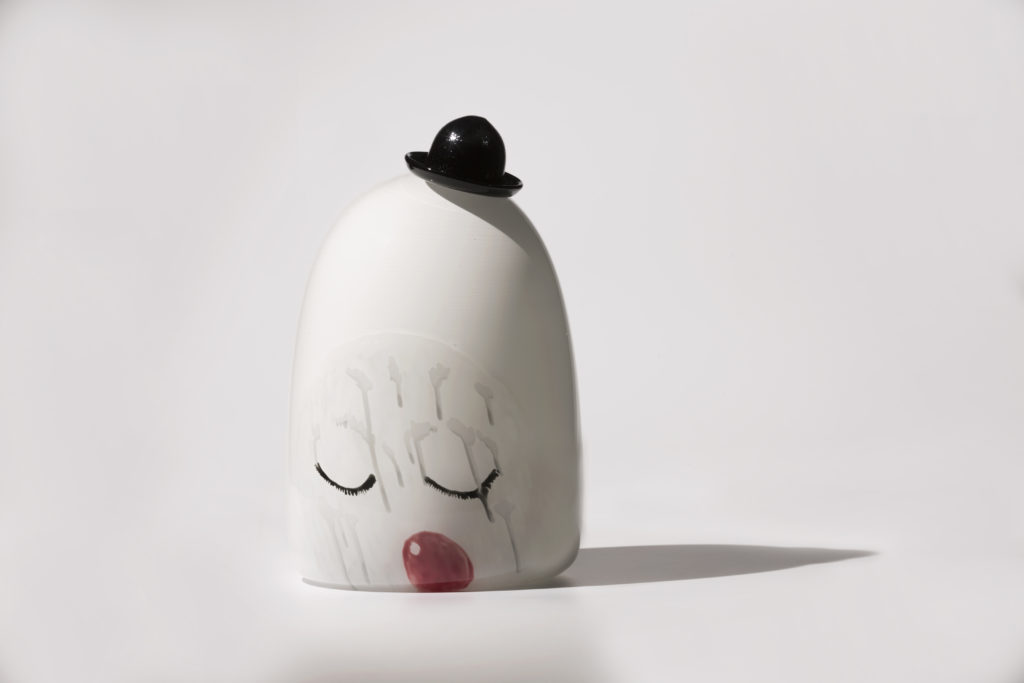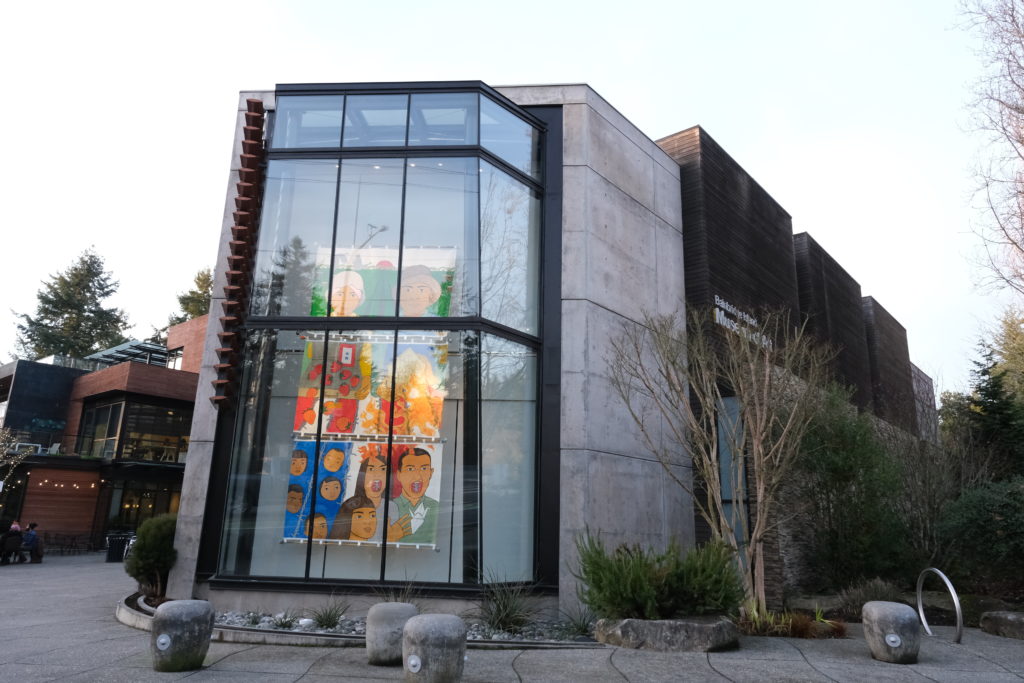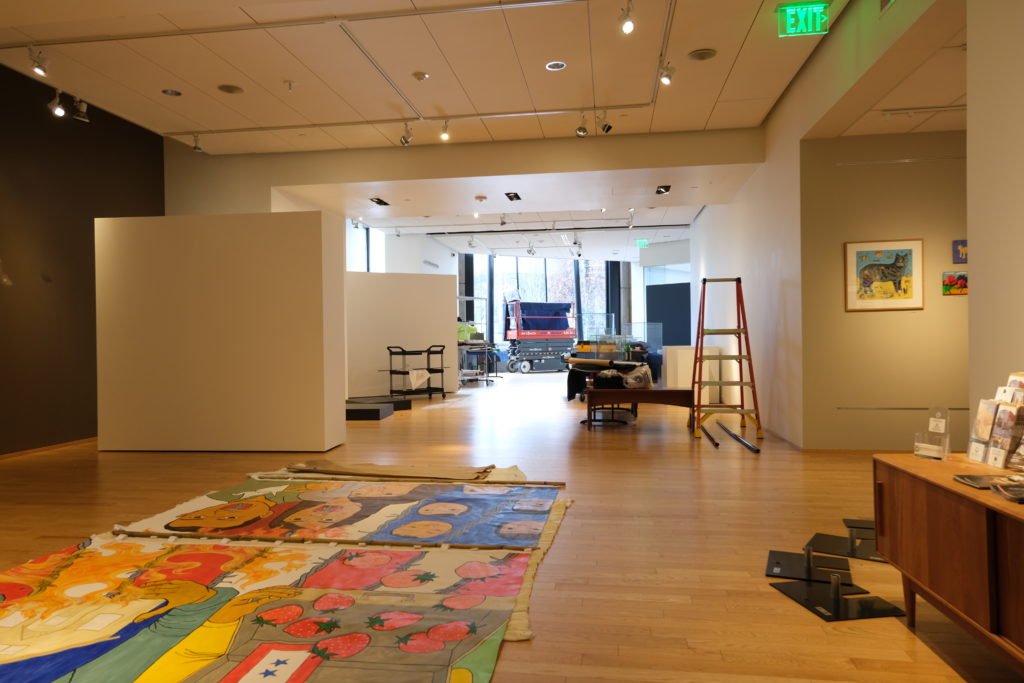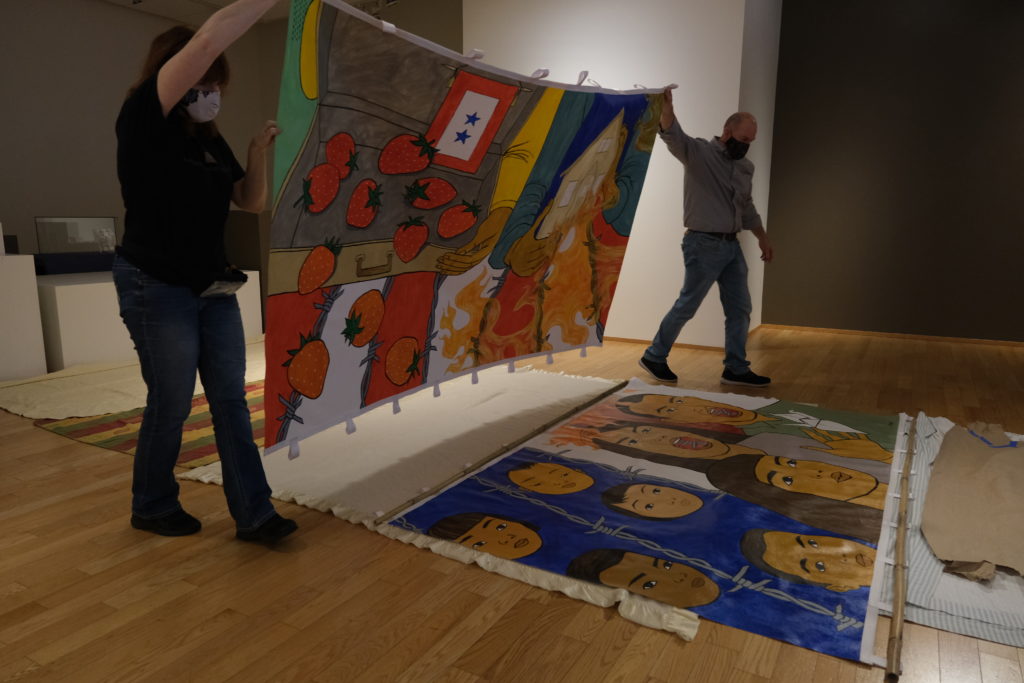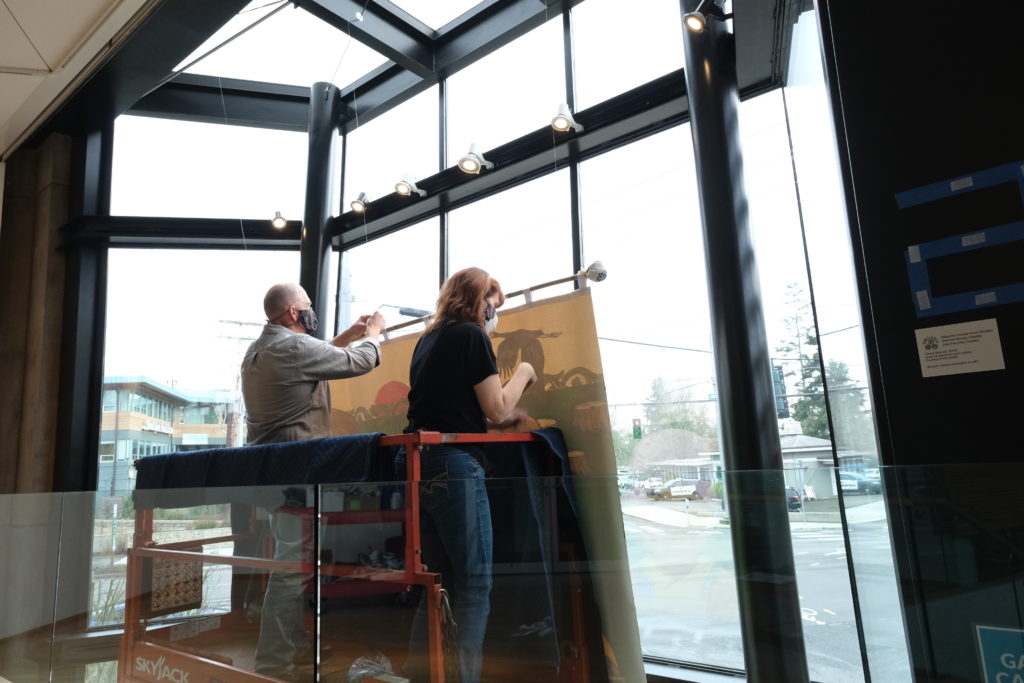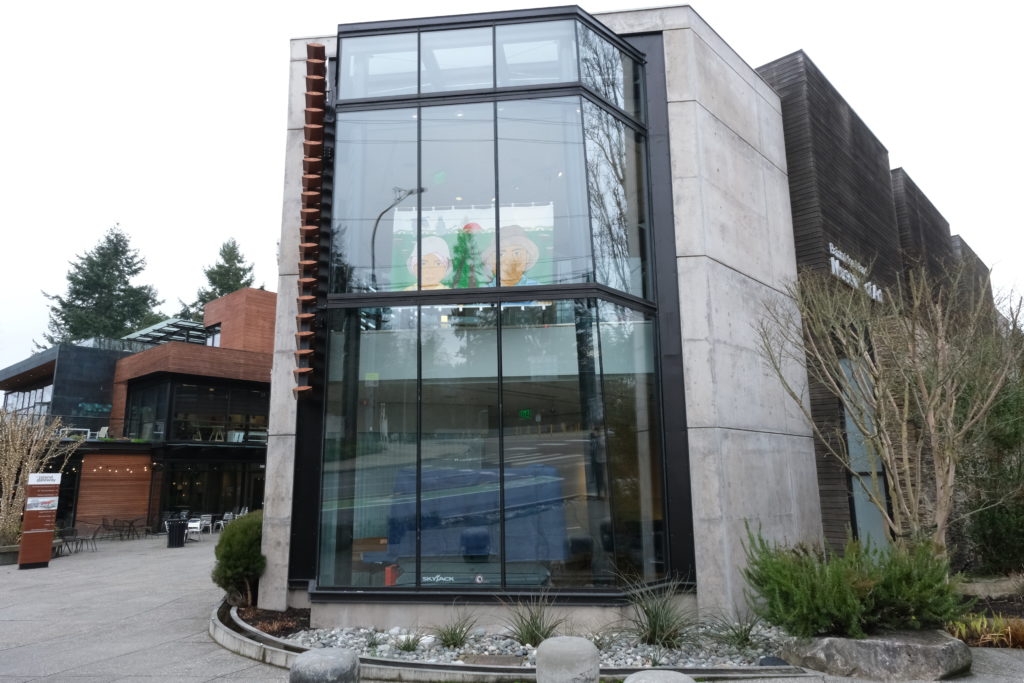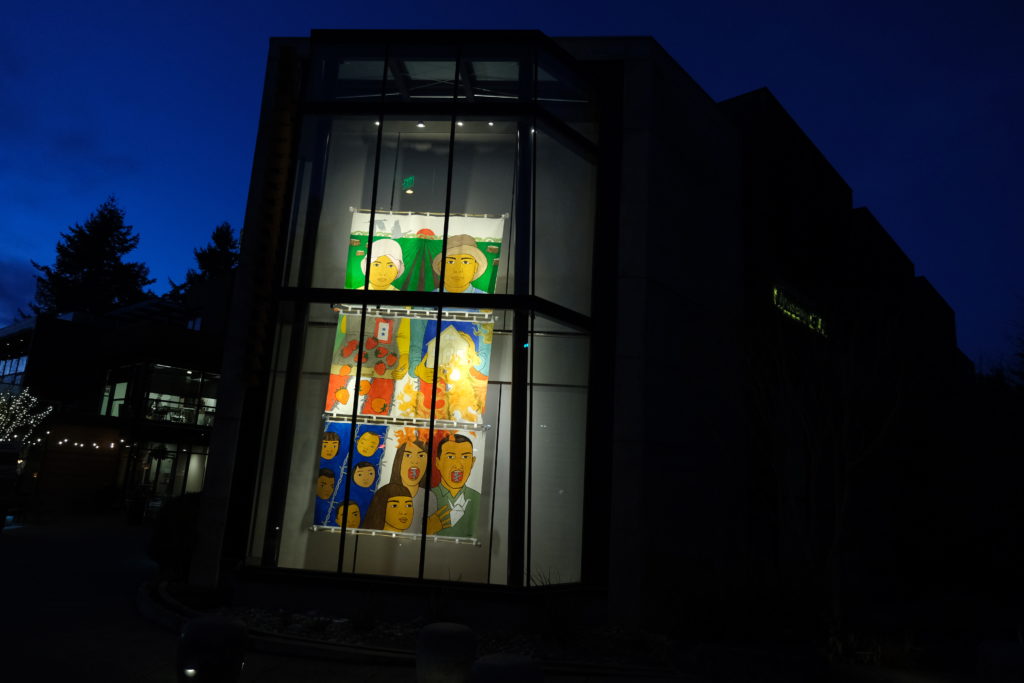As part of the 2021 Momentum Festival, BIMA is once again partnering with our friends at Hiatus Magazine, an online compilation of quarantined teenagers’ most creative works. Throughout the two-week festival, we will be featuring pieces from Hiatus’ three issues that highlight our natural world, including written works featured here on BIMA’s blog and visual work featured as a #DailyMomentOfBeauty on our Instagram and Facebook feeds.
Be sure to visit Hiatus Magazine’s website to explore their most recent issue, Beginnings: Winter 2021.
Now on to today’s featured work!
——
The Dog Feeder by Eileen Miller
Esha woke up at dawn to the unfamiliar silence of a city on edge. Weeks earlier she would have woken up naturally at this time to prepare for school. Now she followed a different routine.
She slipped on her clothes for the day. Too light for the slightly chilly morning, but she would be thankful for them by midday when the sun bore its hot gaze down on the city. Their air conditioner broke down a week earlier as well. Dressing lightly was the best solution for keeping cool.
She went to the kitchen and filled a kettle with water, placed it on the stove, and turned the stove on. Her father would wake up soon and take it from there.
Esha herself wouldn’t have tea for at least another hour. She would normally go to the tea cart down the road with her sister on their way to school. It was only a couple of rupees for a cup of tea from which they would share scalding sips as they wormed their way through ever more crowded streets.
There would be no scalding tea today. The tea cart was gone and the streets once bustling with people would be empty as she passed through them.
She took a banana from the fruit bowl. The warming temperatures had turned it mushy and spotted. From beside the counter she grabbed the bag of the feed she had prepared with her sister the afternoon before.
Deepa would not be joining her that day.
Before she left she grabbed a cloth face mask off a hook by the door. Her aunt sent a couple of handmade ones in the mail the week before. They were a required accessory now.
Opening the door of her family’s apartment, Esha felt the warm outside air brush over her. It was already warmer than it had been fifteen minutes earlier when she opened her window. That was the coolest it would be all day.
Out in the street, stray dogs lounged lazily. Three monkeys sat on the steps of her apartment. They turned to look at her as she approached. The dogs in the street perked up too, their ears twitching and tails curling into spirals.
Esha went down the steps, flanked by the monkeys, and approached the dogs.
The streets were empty, and the dogs had taken full advantage. They were cautiously relaxed, splayed out in the middle of the street like kings, but their eyes watched Esha with a desperate glint.
She reached into her bag and pulled out a handful of feed—rice, lentils, and some leftovers her mother had permitted her to take—and flung it at the dogs’ feet.
The empty streets filled with barking as the dogs leapt up to get the food.
Esha tossed a few more handfuls down to the ground, and directed a few towards the monkeys who had been watching enviously, but knew better than to take from the dogs. Then she left, the street animals too distracted by their meal to follow her.
Other dogs nearby, ones dozing in alleyways, perched on the steps of buildings, or under store awnings, joined the feasting canines.
You weren’t supposed to feed the dogs. At least, you weren’t supposed to before the virus hit. The dogs weren’t exactly beloved neighbors. They were a nuisance, but had some benefits. While they ate the pests before they got into people’s homes and stores, they also stormed the dumpsters between apartment blocks, leaving behind messes of the garbage they left uneaten.
They weren’t enough of a bother to be removed and had lived in the city for as long as it had been established. Most likely they arrived with the first people to settle here, eating the garbage people produced and keeping rodent populations low.
But now pickings were thin and the dogs had slimmed down. Hardly overfed before the city shut down, you could always tell they were in want of a meal, but now their ribs poked painfully through stretched skin and their movements were sluggish and tired.
No one went outside now. Weeks earlier, Esha watched on the news as other cities went quiet, their streets emptied. Cities shut down. Quarantines were imposed on travelers. She hadn’t realized it would happen here as well. The virus hadn’t seemed quite real. News anchors promised it wouldn’t come here. She could still remember the excuses they gave, citing their climate, their culture, and that anyways, it was nothing more than a cold.
At school her classmates traded theories and rumors. Her teachers held enough of the students’ trust to dispel these rumors, but were torn between parroting the government’s reassurances or putting honest fears into their heads. They remained silent.
Within days, it felt like all life that once existed in the city had dried up under the unceasing glare of the sun. Going outside was strictly forbidden unless you had a pass and there was little willingness to go out anyway. Now everyone was afraid.
Somewhere along the line, someone remembered the dogs. They would die without their supply of restaurant garbage scraps; rodents weren’t enough. The monkeys were clever—and agile—enough to sneak through opened windows and climb up fruit trees to survive, but the stray dogs would be doomed. At some point in the drafting of the official list of ‘essential’ businesses and tasks, feeding the strays was added. All they needed were people to do the job.
With little else to do, Esha and her sister applied for passes that permitted them to go out and feed the dogs. Esha’s, an orange slip of paper with her permitted ‘essential’ task printed on it clearly, was tucked in her pocket, easily accessible if she were to be stopped. Her sister’s was at home.
The government had made it clear that dog feeders would have to provide their own food. Esha’s parents only let her bring a limited amount of food with her so she had to make it last. When she and her sister went together to feed the dogs, they stuck to the streets around their apartment, never straying too far so that they could return home for breakfast.
Today, she had to make her supply stretch even further.
Her pass, tucked away in her pocket, held less power than the stuffed bag of feed she had slung over her shoulder. If a police officer were to stop her, her pass would let her off easily, but to the residents of the apartments above her, it was her bag that let them know what she was up to, and stopped them from reaching for their phone to report her.
Normally she wouldn’t be concerned about being reported but today, not getting caught was essential to the task she needed to accomplish.
She left her neighborhood, venturing into territory where she was an unfamiliar face. She fed the dogs along the way but made sure to keep enough food to make her reason for going further from her house a legitimate one.
She passed by an empty vegetable stand, where a pack of young dogs, hardly a few months out of puppyhood, were resting. Too small to fight other dogs for food, they seemed dejected, resting at the place they once received regular meals from.
Esha felt guilty walking past hungry dogs with a bag half-full of food so she tossed them a few handfuls. Good deeds would hopefully make her next task easier.
She left the young strays with their food and turned down into an alleyway. Finally she had reached her destination.
Temples were closed. Or as closed as you could close a temple. But this one was outdoors, protected from the weather by the eaves of the apartments above. It was unprotected however, from potential temple goers.
A pair of monkeys sat on the altar, grooming each other’s fur.
Esha lured them away with a handful of feed and then focused her attention on the shrine.
She rang a bell that hung from the roof of the shrine, and then took out the spotted banana from her bag and placed it in front of a statue of the deity.
Dhanvantari, she said quietly, kneeling before the god. She focused her gaze on the god’s face, his four arms that crossed the air, and the necklace of wilting marigolds someone had placed around his neck.
Closing her eyes, she began to pray. She asked that he protect her city from the worst of the virus, that her country win its battle against it quickly, and that the whole world recover with as few people dying as possible. She spoke quickly, letting the pleas that had been holed up in her head for the past few days tumble out. Taking a breath, she slowed down. It did not matter to her if her other prayers were not answered, so long as this one was. Esha brought up her sister, who lay in bed back at their apartment. She had fallen sick suddenly. Fine in the afternoon, only to turn clammy and cold before dinner. No one knew how she had become sick, but no information could be gained from Deepa. Within hours she struggled to speak, and spent all her energy focusing on her breathing. Esha asked the medicine god to let the illness that had struck her sister be nothing more than a cold, not the virus that her family feared, but that if it was, to allow her sister to heal as soon as possible and keep the rest of her family safe. Whatever had infected Deepa could be inside Esha too at that very moment. She felt guilty, feeling fine while her sister coughed through the night, and feared that she may return home to find her entire family sick.
How many prayers similar to this had Dhanvantari heard in the past couple of weeks, Esha did not know. But she had to pray for her sister too, and hope that he, for all the other prayers he was receiving at the moment, would listen to her and allow Deepa to recover.
Esha stood up, bowed once more, and then slung her bag of food over her shoulder. It was half full, but she doubted she would make it home for breakfast today. There were still many dogs who needed to be fed.
——
Be sure to follow Hiatus Magazine at their Instagram and check out all the work on their website here.
